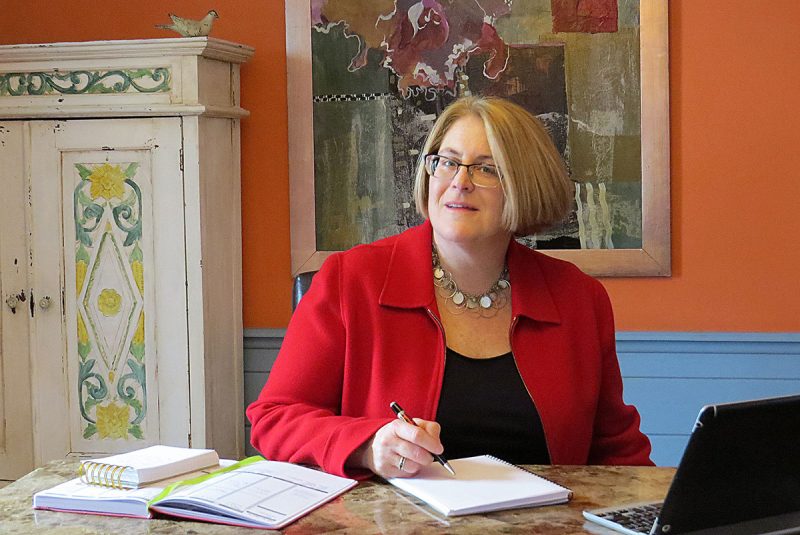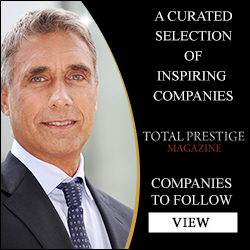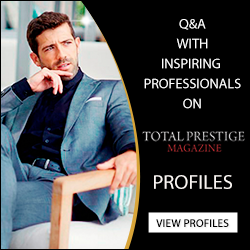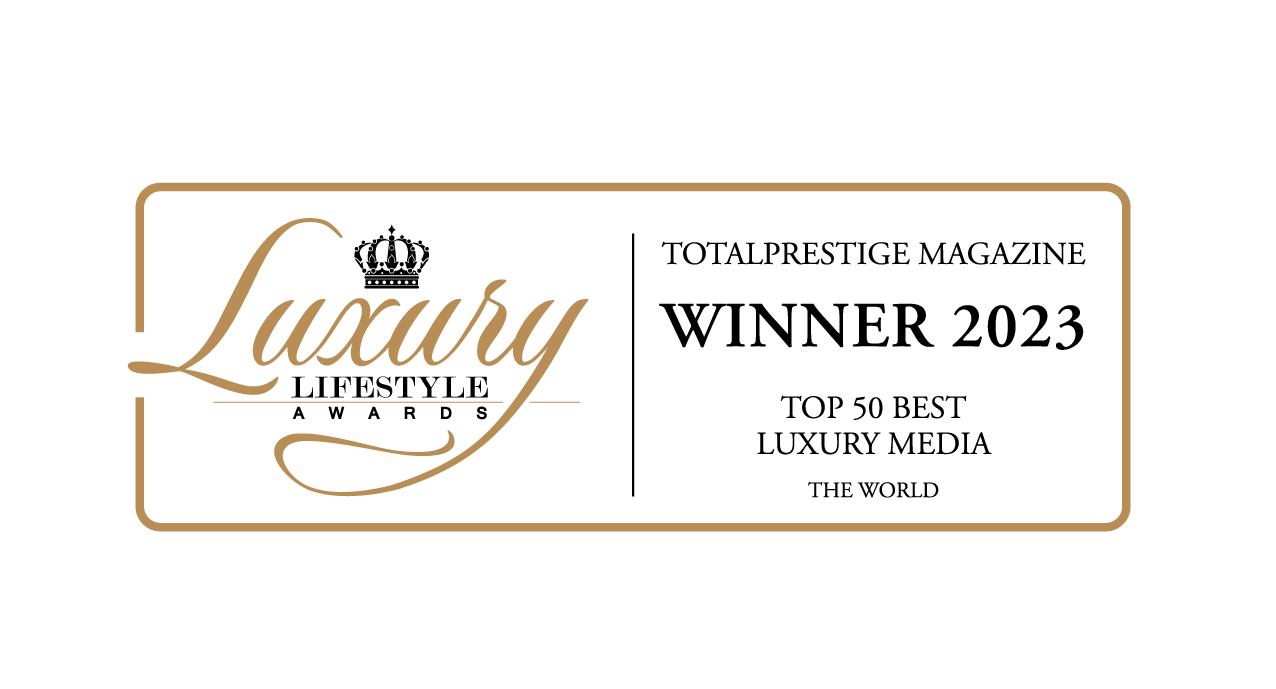Linda Pepe creates results for the companies she works for. Whether it has been for a high-tech startup or a large corporation, Pepe has created marketing strategies that make people sit up and take notice.
If Pepe had followed her initial dream, it all could have been very different. A simple twist of fate and a career change decision in college put her on the path of her true calling in the marketing sector. It was a decision numerous companies should thank her for making.
Pepe is a highly sought after marketing guru. In early 2018, she joined FUVI as the company’s Chief Marketing & Creative Officer. It has led to a very exciting time in which Pepe wears many hats for the high-tech startup.
Linda, first off, can you tell us about your career and how you got started in marketing?
To be perfectly honest, when I was very young my goal was to be a comic book artist when I grew up. But by the time I went to college at Parsons School of Design in NYC, I realized that as fun as it would be spend my days drawing superheroes, that I was a lot more likely to be able to support myself as a designer than a comic book artist. At Parsons I focused on communication design and learned how to design logos, brochures, print advertising, etc. And I’m happy to report that I discovered that design was also lot of fun – in fact I loved it!
After leaving Parsons, I worked my way up from designer to creative director – working both in-house and freelance for a large variety of clients including Time and Fortune magazines, The New York Stock Exchange, Showtime Networks, and Fidelity Investments. My career changed trajectory after an intriguing direct mail concept piece I designed was awarded “Best of Show” at an industry awards event, and I joined one of the top advertising agencies in New England, Mullen Advertising (now Mullen Lowe), as Senior Art Director in their direct marketing division. It was there that I learned the importance of response rates, data, and analytics long before they became industry buzzwords. My work there for General Motors and other clients won dozens of industry awards – all based on results. This focus on analytics, metrics, and return on investment is one of the things that has enabled me to help my clients stand out from their competitors.
After I left Mullen, I began working in B2C and B2B in-house marketing, focusing on the financial and legal industries. I worked for five years as the creative lead in a 70 person-marketing department of an international company with 32 locations worldwide, building an award-winning creative team. From there, I accepted a director of marketing position at an Am Law 100 firm where I implemented an innovative content marketing strategy which resulted in over a million article reads in one year, and an incredible 30 thousand video views in just two weeks. This led to me being in demand as a consultant as I spoke about my content strategy at marketing conferences around the country.
Ready for a new challenge, I joined FUVI Cognitive Network as Chief Marketing and Creative Officer. FUVI is a startup developing wearable technology that can help improve learning comprehension.
You have expertise in direct marketing. Can you explain exactly what direct marketing is and how you apply it to help companies grow?
Two main ways to sell products are through general advertising and direct marketing. General advertising usually takes the form of print ads or commercials, and its goal is to influence the consumer by creating awareness and building brand recognition over time. Direct marketing takes the form of direct mail, email, online advertising, and targeted print/broadcast advertising. The goal of direct marketing is to get a specific response from a targeted group of consumers, such as placing an order, visiting a website, or downloading information through the use of a call-to-action. One other very important difference is that with direct marketing the results are measurable, providing the ability to see how successful a strategy is, and to make adjustments if needed. Direct marketing is much more cost effective than general advertising, enabling clients to optimize their budgets.
I specialize in creating results-driven strategic marketing solutions for the companies I work with.
Pepe brims with excitement when talking about her role at FUVI. It is a position that gives her the chance to do new things with a brand that is just starting out. While some of the companies Pepe has worked with have been in business for decades, she gets to watch FUVI grow from the ground up and be a part of building the brand brick by brick.
Linda, you currently work with an incredibly interesting company called FUVI. The company designs wearable technology. Can tell us about your role with the company and the products it creates?
At FUVI Cognitive Network our mission is to create innovative cognitive products that help people learn, think, communicate and make decisions effectively. FUVI is a startup developing wearable technology that helps improve learning comprehension. The first product we plan to launch is the FUVI I SEE Learning System. This system uses a combination of wearable technology and software to monitor cognition during the learning process, and then highlights areas for the user to focus on for a better understanding of the material.
As Chief Marketing and Creative Officer at FUVI, I’m responsible for developing the marketing, branding, and creative strategy. One advantage of working at a startup is the variety of types of projects that I get to work on – everything from writing pitch decks and business plans, to supervising photoshoots, meeting with attorneys, and working with our technical director on the hardware and software details of our products.
What are the challenges to building a marketing strategy for a wearable technology startup company?
While working at a high-tech startup, I’ve found that there is a balancing act that needs to be done between the usual role of a CMO – building company visibility and marketing a product – and the need for us to keep details about our product confidential until the launch. I am very pleased to report that FUVI was named one of the “15 Most Promising Wearable Technology Startups – 2018” by Startup City Magazine!
You joined the company in March 2018. Can you tell us what inspired you to join FUVI?
I have always enjoyed taking on new challenges, and was very intrigued by the challenge of joining a startup developing a product with the potential to make a positive difference in people’s lives.
In a previous role at Mintz Levin Law Firm, Pepe was able to use her marketing knowledge to bolster the company’s identity. Through her marketing tactics, Mintz Levin’s attorneys became thought-leaders in the profession. Her effective marketing strategies improved the law firm’s brand and how potential clients perceive it.
While working at Mintz Levin, you discovered new channels for the firm’s lawyers to reach the public through content. How did you take a longstanding law firm and bring it into the modern age through marketing?
At Mintz Levin I created and implemented a content marketing strategy that raised awareness of the firm and enabled individual attorneys to position themselves as industry leaders. My first step was to build industry-focused blogs and encourage attorneys to write relevant, interesting articles on a regular basis. Then, I distributed that content through standard social media channels such as LinkedIn and Twitter; combined with a network of distribution partners. Article reads were all tracked and reported, and the better the results the more encouraged attorneys were to keep it up, creating a competitive element which pushed them even further.
This strategy led to over a million article reads in one year, our attorneys become well-known as thought leaders in their industries, and most importantly – they acquired many new client engagements. I followed that up by implementing a “Hot Topics” video series, which resulted in over 30,000 views in just two weeks.
Pepe is also passionate about her local community. She demonstrated her drive outside of the office by taking on city hall and the EPA in a battle to protect the Sudbury River.
Linda, you are passionate about environmental initiatives where you live. One, in particular, is the Sudbury River. Tell us about your fight to protect the river.
Have you ever heard the expression “You can’t fight city hall”? Well I decided to try, and am proof that it can be done!
I had always thought of the EPA as a good organization until I learned of a plan they had for our river that would cause more harm to the environment than help. The EPA planned to clear-cut trees around the Sudbury River and dump 140,000 tons of sand over the bottom to cover mercury from a factory that closed in the 1970s. But that mercury had already been covered naturally by decades of silt. The EPA admitted that there was no danger in swimming or boating on the river. Their tests showed that the only potential risk would be in consuming large quantities of fish, which they agreed was unlikely to happen. In fact, grocery store fish have more mercury than the fish in our river. This unnecessary plan, which was based on old tests, would have cost over $11 million, taken many years to complete, destroyed wildlife nesting grounds and habitats, and created health and breathing issues for people living nearby. Plus they estimated that it would take a dozen years or more for the natural environment to be rebuilt.
I co-founded a grassroots movement to stop the EPA. Every weekend, we were out in the bitter cold knocking on doors, talking to neighbours, explaining the EPA plan and its high cost to the environment and community. Entire neighbourhoods put up yard signs, local newspapers wrote articles, and a local TV station did an hour-long special about our fight. We got scientists involved who agreed that the EPA plan made no sense, and would actually hurt the environment. We made a presentation to the local board of selectmen (who previously had been for the EPA plan), and they decided to back us, and helped get our local representatives and senator on our side. We had meeting after meeting with the EPA and they finally agreed to put up warning signs for fishermen, and to retest the fish. Guess what? The new tests proved that we were right – the mercury levels had gone down by 23% and the river was safe! So, the EPA backed down and cancelled their plan.
There are many projects that I have worked on that I am proud of – but this personal project is probably the thing I am proudest of, because it made a difference, not just for the environment, but also for the lives of the people and creatures that live in and around the river.
Marketing continues to evolve and Pepe is happy to share her knowledge with the new generation of individuals entering the industry. With so many evolutions in marketing over the last 25 years, she believes the one constant it will see in the future is change.
Along with working in marketing, you have spoken to a number of groups about content marketing. Do you see yourself interested in passing on the information you have learned to teach the next generation of individuals in your industry?
I think we all have an obligation to help others and teach the next generation. At times I’ve had well-meaning colleagues caution me not to give away all of my “marketing secrets”. However, I’ve found that rather than just copying ideas, people are usually inspired by them, adding to them and changing them to make them their own. Then I can learn from them, and how great is that?
When I am supervising someone on a project, I try not to tell him or her how to solve a problem, but instead explain what problem needs to be solved. They will usually take a different path than I would, and often amaze me with their creativity and ingenuity.
How has marketing evolved since you first started your career?
The world itself has changed rapidly, and marketing has changed along with it. Consider how distribution of communications to potential customers has changed over the years. Twenty-five years ago, a newsletter would have just been printed and mailed, and seen by a very limited group. Twenty years ago, just 30% of US households had Internet service. Fifteen years ago, when the Internet finally became mainstream, there was a huge improvement in distribution with that newsletter now being able to be posted to a company website and emailed out. It was much more immediate and companies were able to reach many more customers and potential customers. Over the past five years, there has been another huge change. Written content is now posted on company websites, sent out via email, posted to blogs, sent out via social media, picked up by other websites and blogs, and has the ability to go viral. The way we communicate with customers and potential customers completely changed over a 20-year span.
What do you believe the future of marketing is? Are there more evolutions to come or will we continue with our current ways of distributing content for the foreseeable future?
Marketing has evolved so rapidly in a very short period of time that it’s hard to know what is around the corner. Content marketing and thought leadership will continue to be key, and video use will continue to grow. I expect that the future of marketing will also include a higher level of targeted/personalized marketing using AI/personal digital assistants, and augmented reality. But just wait – things are changing so rapidly that in five years we’ll probably be using new tools that aren’t even on our radar yet.
Besides building great marketing plans, Pepe has another claim to fame thanks to one of the coolest 1990s Sports Illustrated advertising tools.

What is something most people don’t know about you?
I put myself through college doing technical illustrations of helicopters. This was pre-computer, and the drawings were done by hand in pen and ink, using a parallel ruler and templates.
One more: People of a certain age will likely remember the Sports Illustrated Sneaker Phone. It was a phone that looked just like a sneaker which was given away free with a subscription to the magazine. It was a hugely successful marketing promotion, which made quite a splash at the time. Because of my experience doing technical illustrations I was asked to do the technical drawings for the sneaker phone!
While she is a renowned marketing professional and an intense environmentalist, Pepe is down to earth when she is at home.
Linda, can you tell us how you start your day?
Every morning begins with taking our two rescue pups for a walk. They leap out of bed excited to see what the day has in store for them with such an infectious, joyous attitude that a walk with them is a great way to start the day. Then, I spend some time in our home gym – usually a combination of the water rower and/or reading while on the bike. I find that early morning exercise helps me to begin each day with more energy. After breakfast and a shower it’s off to work!
What makes you smile?
Have you ever noticed that when you walk down the street, if you pass someone who looks at you and smiles, you automatically smile back? And that no matter how stressful a day it has been, when you start smiling the act of smiling actually makes you feel at least a bit better? Scientific research shows that smiles help fight off stress, lower your heart rate, and lift the moods of you and those around you. And yes, smiles actually are contagious.
There is almost always something to smile about, and I try to smile as much as I can because I know that it helps me feel good, and I hope that it helps make someone else’s day a bit brighter.
Do you have any hobbies?
I enjoy going to antique stores and flea markets and finding unique, usually somewhat beaten up, furniture pieces and restoring them.
But I’ll also admit that I have been told more than once to not bring home any more chairs, because there are only two of us, and there is a limit to how many chairs we can sit on!
Which historical figure do you most admire?
Eleanor Roosevelt. Besides being First Lady, she was a champion of social reform and human rights. She advocated for expanded roles for women in the workplace, civil rights for African Americans and Asian Americans, and the rights of World War II refugees. She was also the first presidential spouse to hold regular press conferences, write a daily newspaper column, write a monthly magazine column, host a weekly radio show, and speak at a national party convention. After her husband’s death, she became a United Nations delegate and continued to work for political, racial, and social justice.
Can you share two of your favorite quotes with us?
“Whether you think you can or you think you can’t, you’re right.” – Henry Ford
“The road to success is always under construction.” – Lily Tomlin
If you had the power to change just one thing in the world what would it be?
I would make sure that everyone, young and old, has the ability to get a high-quality education at no cost. Education provides knowledge, inspires creativity and invention, and enables people to better themselves and improve their lives. It also helps combat poverty, decrease inequities, and strengthen the economy.
Is there anything else you would like to add?
This has been fun. Thank you.
It may not be long before FUVI is the talk of the tech world. With Pepe as the company’s Chief Marketing & Creative Officer, FUVI has an experienced person building innovative marketing strategies. Her work speaks for itself and there are plenty of businesses out there that have already benefited from it.
For more information or to contact Linda Pepe please visit www.lindapepe.com.
To learn more about FUVI, visit https://www.fuvi.us/











